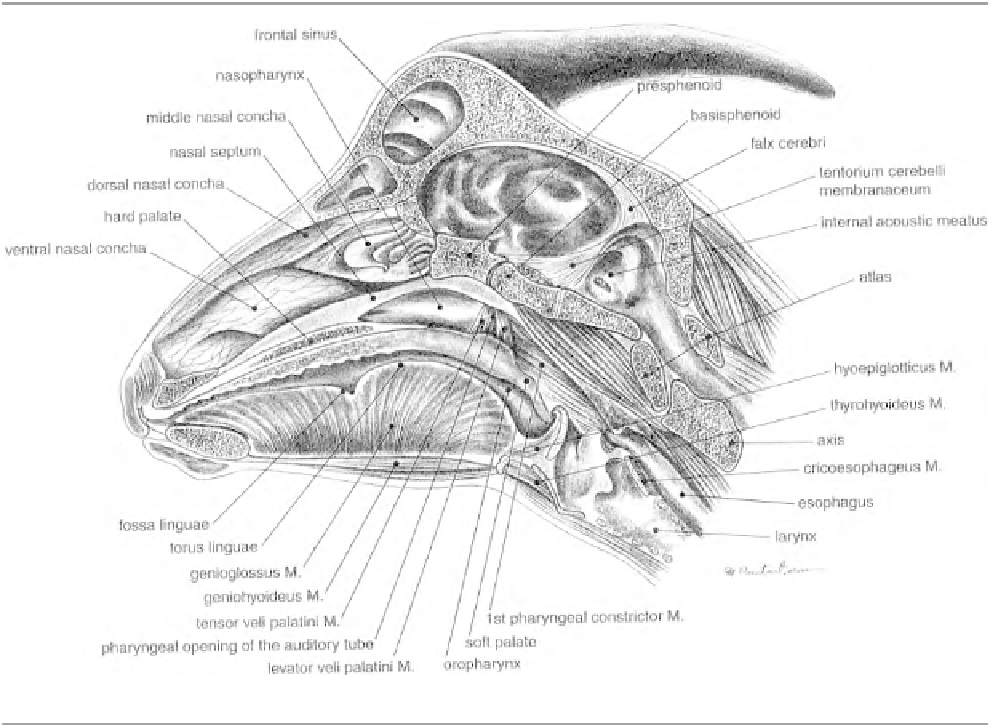Agriculture Reference
In-Depth Information
Figure 6.22
Median aspect of the head, right half.
and fl oor of the nasal cavity proper are outlined by the
bones of the skull. The fl oor is the hard palate, which sepa-
rates the nasal cavity from the oral cavity. The vomer bone,
which lies on the hard palate, supports the nasal septum, a
cartilaginous blade separating the nasal cavity into two
symmetrical halves. Inside of the nasal cavity, three pairs
of fi ne bony scrolls called nasal conchae are separated by
spaces called meatuses (Figure 6.22 ).
The nasal cavity including the conchae is intimately
lined by a mucosal coat, which has respiratory character-
istics in the rostral two-thirds of the cavity and olfactory
characteristics in the caudal third of the cavity. The
latter is responsible for transmitting smell impulses to
the brain.
There are several cavities within bones of the skull
called paranasal sinuses that are associated with the nasal
cavity. They are lined by respiratory mucosa and com-
municate among them and with the nasal cavity. Their
names correspond to the bones that protect them, such as
frontal, lacrimal, maxillary, palatine, and conchal sinuses.
A symmetrical extension of the frontal sinus penetrates
within the base of the horn and is known as the cornual
diverticulum (pl. diverticula). The function of the parana-
sal sinuses is not yet fully understood, but the frontal
sinuses with the cornual diverticula protect the brain from
the heavy blows during the fi ght of male goats.
T
HE
P
HARYNX
The next segment of the air passages is the pharynx. This
is a very important organ, with three compartments: the
nasopharynx related to the respiratory system, the orophar-
ynx belonging to the digestive system, and the laryngo-
pharynx, where the respiratory pathway and the digestive
pathway cross with each other.
The nasopharynx has a roof (the sphenoid bone of the
skull), a fl oor (the soft palate), and lateral walls (see Figure
6.22). On the lateral walls, the symmetrical openings of
the auditory tubes can be seen. The soft palate is the






